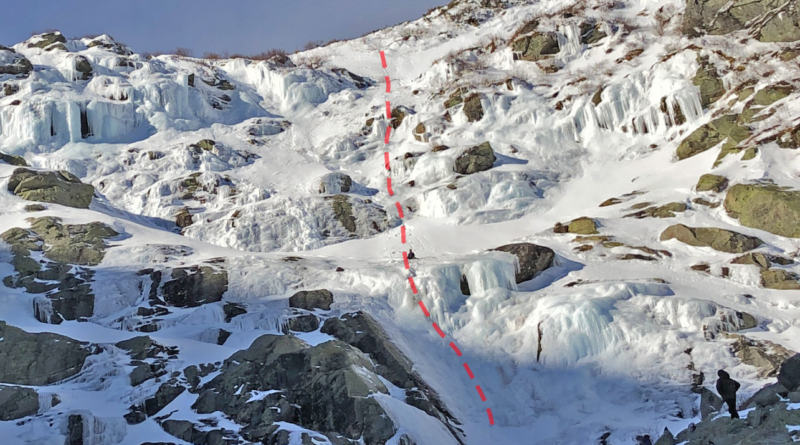Hikers Rescued After Long Slide on Mt. Washington
“On the morning of Saturday, January 9, 2021, two 20 year old males were ascending the Tuckerman Ravine Trail. Around 11 am, witnesses noted these two individuals on foot, falling near the rollover at the top of the ravine. Both individuals fell around 500 vertical feet, impacting exposed boulders and ice along the way. One came to a stop on a ledge above the final ice cliff while the other fell past this point and was described as being airborne until he landed on his upper back in the snow below the ice cliff,” so begins the incident report from the Mt. Washington Avalanche Center, which oversees rescues at Tuckerman Ravine in New Hampshire
The onlookers were able to alert a rescue team and by 12:30 reached the two. They were conscious, though wet and cold. The report stated that one had an “altered level of consciousness.” One of the two was able to hike down while the other was belayed down and then was able to walk to the Hermit Thrush Cabin.
The two had been climbing a trail that often is used by skiers in later winter when the snowpack has set up. However, this year limited snowfall (only 6 inches has been recorded there in January) and though the weather was relatively warm (in the 25-degree range) and the snow was softer than if temperatures had been lower, it was too slick for the microspikes the hikers were using. Though they knew the trail and had been up it before, they were not carrying ice axes or ropes.
It is worth it to read the whole report as it’s a good reminder of the hazards that come with winter hiking, especially in a low-snowpack year and the same dangers exist in the Green Mountains, especially above treeline. It also a reminder that any fall in the high terrain could have severe consequences. In April, 2019, a skier died on Mt. Washington when a slide broke loose.
As the report concludes:
“Both individuals were equipped with leather hiking boots and microspikes. The pair had trekking poles in the mix, but no ice axes. They were navigating using the GPS in their phones. One individual had been on the same route 4-5 times before, while the other was there for the first time. Their objective was to ascend the Tuckerman Ravine Trail, and presumably continue to the summit.
One patient reported reaching a point where his microspikes provided insufficient traction. He said he fell forward like a starfish, slid over an ice bulge, and continued falling. His partner saw this happen, lost his footing, and subsequently fell as well. Both individuals impacted multiple exposed boulders and ice bulges during their descent.
This season has seen slower snowpack development than recent years. December accumulation took a big hit from the Christmas rain event, and January has provided less than 6” of new snow so far. As such, exposed hazards abound and present a minefield of challenges and consequences.”

